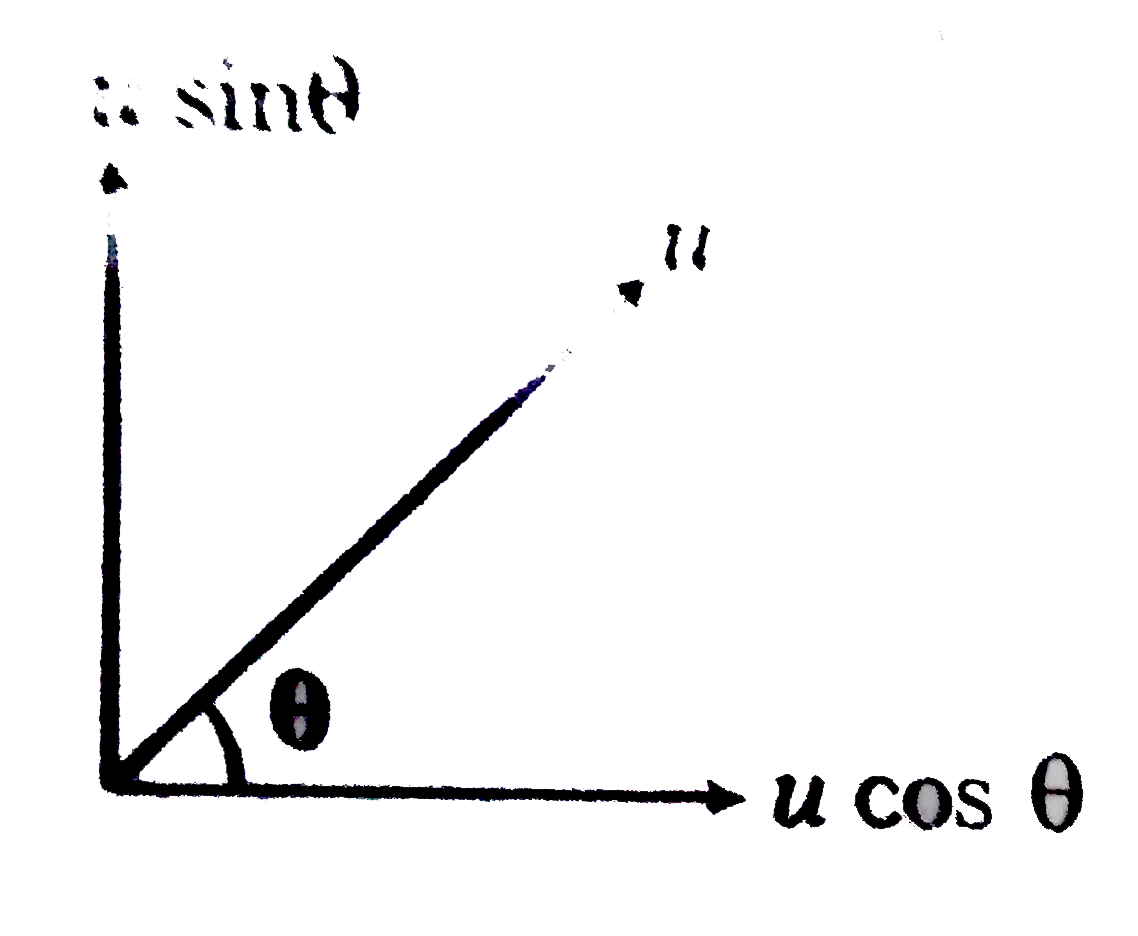A body is projected with an angle θ.The maximum height reached is h.If the time of flight is 4sec and g=10m/s2,then the value of h is
40 m
20 m
5 m
10 m
The correct Answer is:B
As, t=2usinθg⇒4=2usinθg .....(i)

⇒usinθ=2g and h=u2sin2θ2g=4g22g [from Eq.(i)]
⇒h=20m
Topper's Solved these Questions
- BOOK - DC PANDEY ENGLISHCHAPTER - MOTIONEXERCISE - C. Medical entrances gallery1videos
MOTION
- BOOK - DC PANDEY ENGLISHCHAPTER - MEASUREMENT AND ERRORSEXERCISE - Subjective19videos
MEASUREMENT AND ERRORS
- BOOK - DC PANDEY ENGLISHCHAPTER - MOTION IN A PLANEEXERCISE - (C )Medical entrances gallery32videos
MOTION IN A PLANE
Similar Questions
For a projectile, the ratio of maximum height reached to the square of flight time is (g=10ms−2)
View SolutionA body is projected at an angle θ so that its range is maximum. If T is the time of flight then the value of maximum range is (acceleration due to gravity= g)
View SolutionA body is projected at angle 30° to horizontal with a velocity 50 ms−1 . Its time of flight is (g=10 m/s2)
View SolutionA body is projected with a velocity →v=(3ˆi+4ˆj)ms−1 The maximum height attained by the body is: (g=10ms−2)
View SolutionA stone is thrown at an angle θ to the horizontal reaches a maximum height H. Then the time of flight of stone will be:
View SolutionA stone is thrown at an angle θ to the horizontal reaches a maximum height H. Then the time of flight of stone will be:
View SolutionA stone is projected in air. Its time of flight is 3s and range is 150m. Maximum height reached by the stone is (Take, g=10ms−2)
View SolutionA ball is thrown at a speed of 20 m/s at an angle of 30∘ with the horizontal . The maximum height reached by the ball is
(Use g=10m/s2)View SolutionA body is projected with a certain speed at angles of projection of θ and 90−θ The maximum height attained in the two cases are 20m and 10m respectively. The range for angle of projection θ is
View SolutionTime of flight is 1 s and range is 4 m .Find the projection speed is:
View Solution
